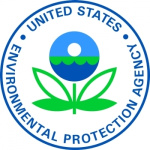- Industry: Government
- Number of terms: 11955
- Number of blossaries: 0
- Company Profile:
U.S. Environmental Protection Agency (EPA) is a federal agency responsible for the development and enforcement of regulations for human health and environment protection. The agency researches and sets standards for environmental programs and delegates. It was founded in 1970 following the proposal ...
As defined under RCRA, any solid, semi-solid, liquid, or contained gaseous materials discarded from industrial, commercial, mining, or agricultural operations, and from community activities. Solid waste includes garbage, construction debris, commercial refuse, sludge from water supply or waste treatment plants, or air pollution control facilities, and other discarded materials.
Industry:Agricultural chemicals
The design, manufacture, purchase, or use of materials (such as products and packaging) to reduce the amount or toxicity of garbage generated. Source reduction can help reduce waste disposal and handling charges because the costs of recycling, municipal composting, landfilling, and combustion are avoided. Source reduction conserves resources and reduces pollution.
Industry:Agricultural chemicals
In this report, estimates are provided for end uses as follows: swimming pools, spas and industrial water treatment (excludes chlorine/hypochlorites which are reported separately); disinfectants and sanitizers (including industrial/institutional applications and household cleaning products); and other specialty biocides (including biocides for adhesives and sealants, leather, synthetic latex polymers, metal working fluids, paints and coatings, petroleum products, plastics and textiles). These are categories of end usage which are covered by FIFRA. There are other end uses of specialty biocides which are regulated under FFDCA and are not covered in this report. (such as hospital/medical antiseptics, food/feed preservatives and for cosmetics/toiletries).
Industry:Agricultural chemicals
A method of grouping industries with similar products or services and assigning codes to these groups.
Industry:Agricultural chemicals
The time point at which continued dosing at the same level results in no further increase in cholinesterase inhibition.
Industry:Agricultural chemicals
All water naturally open to the atmosphere (rivers, lakes, reservoirs, ponds, streams, seas, estuaries) and all springs, wells, or other collectors directly influenced by surface water.
Industry:Agricultural chemicals
Environmentally friendly methods of farming that allow the production of crops or livestock without damage to the farm as an ecosystem, including effects on soil, water supplies, biodiversity, or other surrounding natural resources. The concept of sustainable agriculture is an "intergenerational" one in which we pass on a conserved or improved natural resource base instead of one which has been depleted or polluted. Terms often associated with farms or ranches that are self-sustaining include "low-input," organic, "ecological," "biodynamic," and "permaculture."
Industry:Agricultural chemicals
The cooperative action of two or more organisms producing a greater total result than the sum of their independent effects; chemicals or muscles in synergy enhance the effectiveness of one another beyond what an individual could have produced.
Industry:Agricultural chemicals
